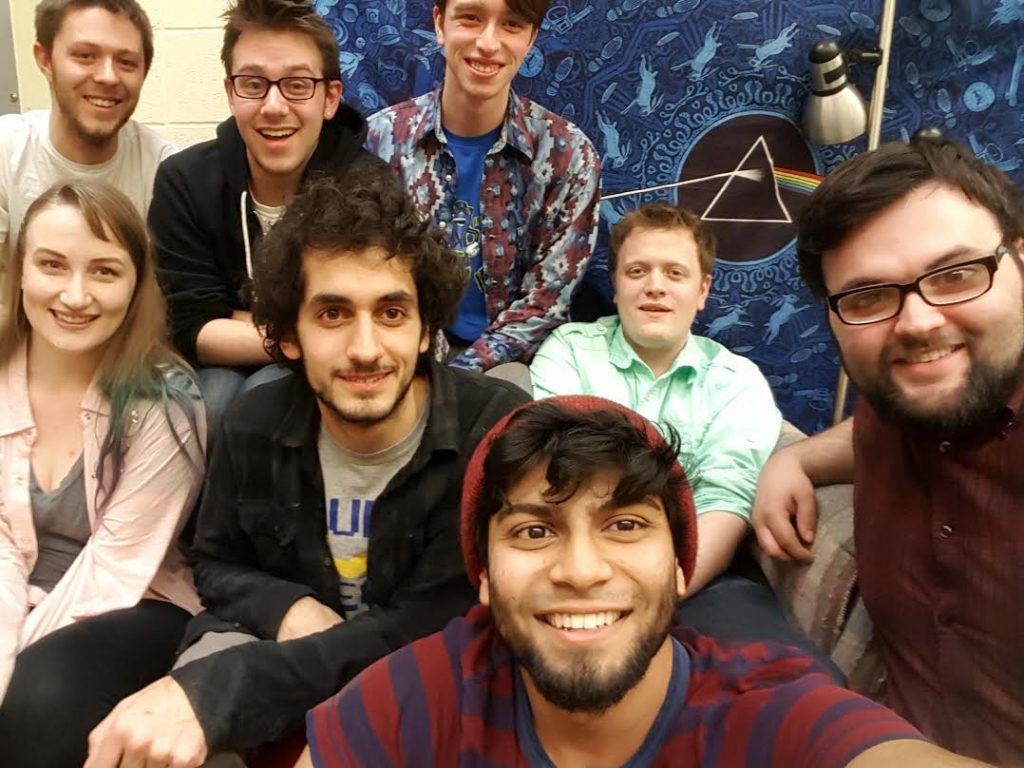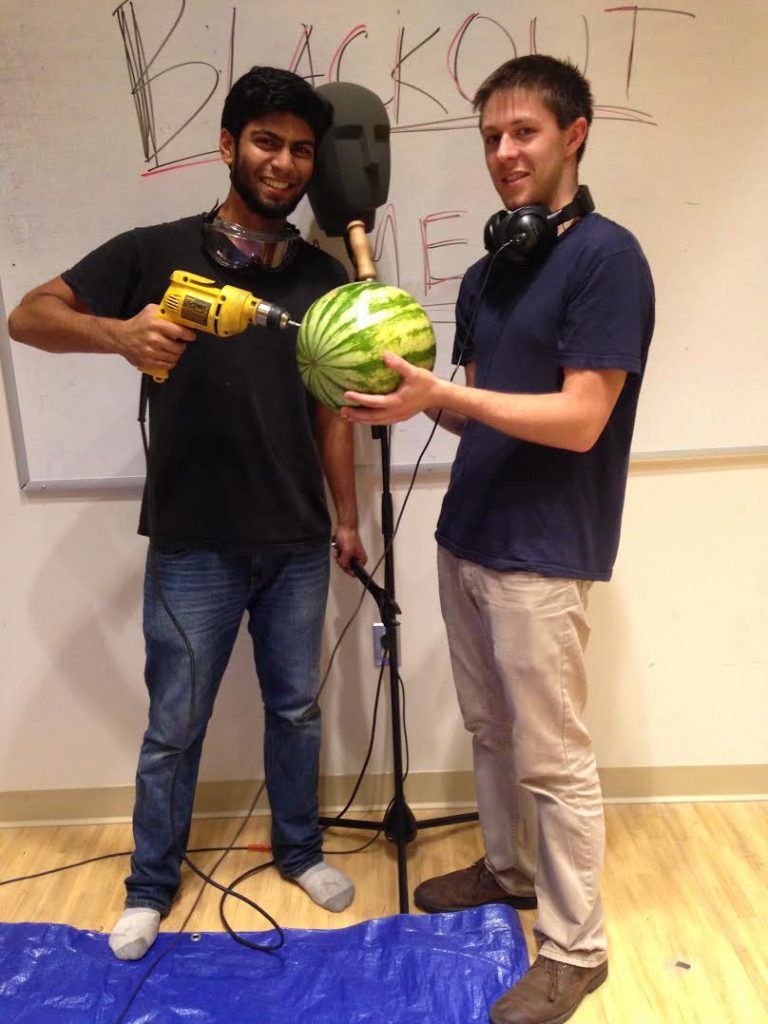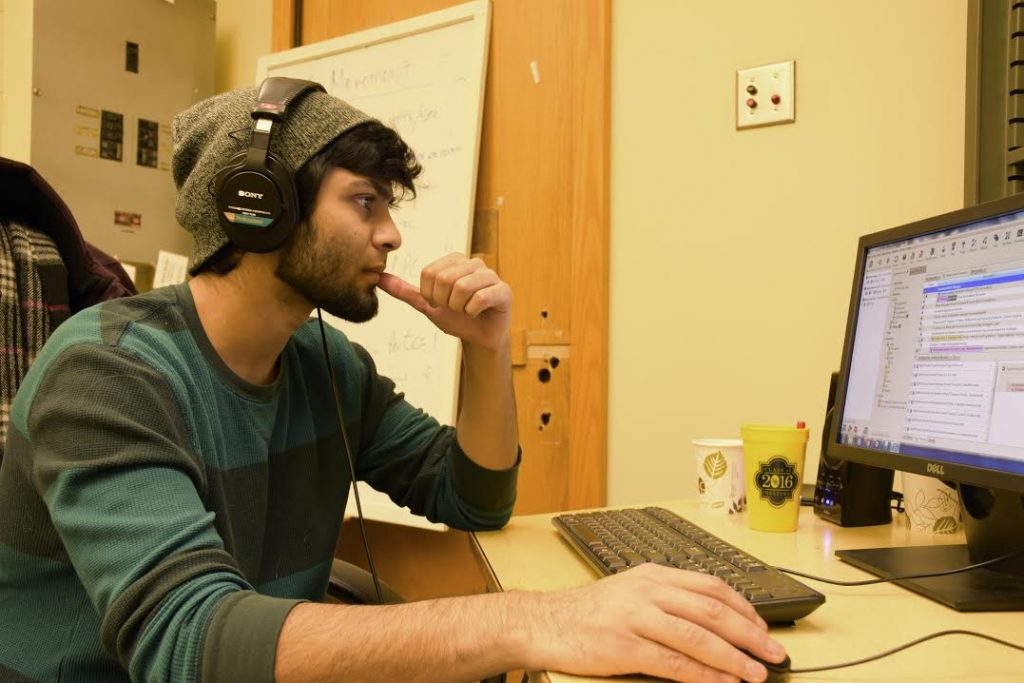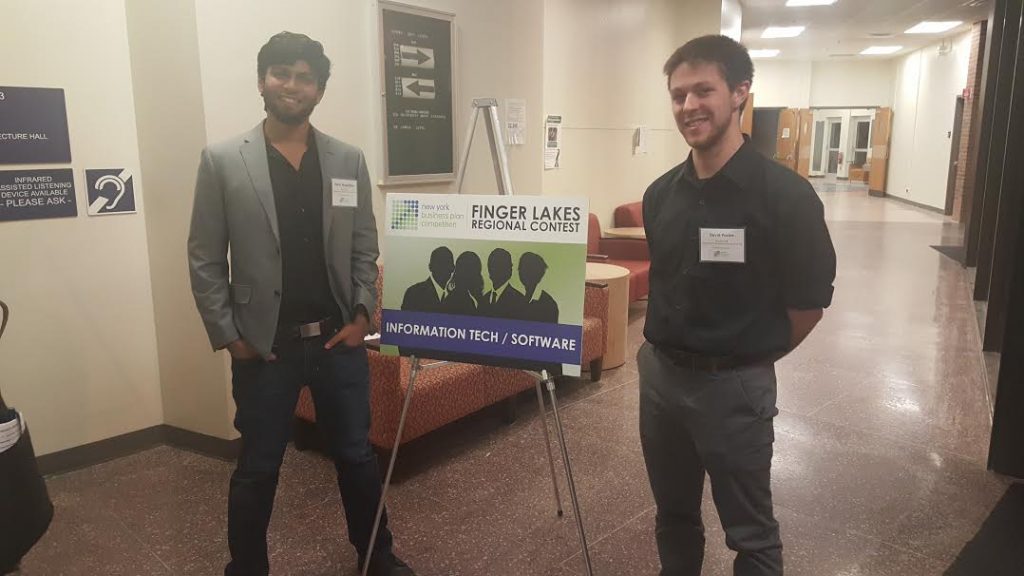
Continuing our series about the audio artists behind blind-accessible game development, we now speak to Kedar Shashidhar, Founder and Creative Director of the BlackOut VR game studio. His team is currently in the QA phase of their first blind-accessible horror game, Sight Unseen. Kedar was kind enough to share stories about developing this immersive ear-lead experience and taking a fresh approach to design for diverse audiences.
Hello, please introduce yourself.
Kedar Shashidhar: Hey there, my name is Kedar Shashidhar and I make 3D audio-focused experiences. Currently I run an indie game studio that is going to soon be releasing an audio-only game called Sight Unseen. I also work as the Associate Creative Director for OSSIC creating cool 3D audio dominant experiences.
How did you get into sound?
KS: My family was heavily involved in Indian classical music, so at a young age I learned how to sing and play instruments, taking a particular interest in the saxophone. My dad, who was an Indian classical violinist, oftentimes liked to bring his gear to shows. Eventually, I started playing with his gear, and before I knew it I was the one using most of his gear to make stuff in Garageband. By the time college rolled around, I found myself applying to the Eastman School of Music at the University of Rochester, but thankfully I discovered the University of Rochester was establishing a brand new audio engineering program. As soon as I heard that I dropped the music degree and began my journey into sound.
Currently your team BlackOut VR is finishing your first game Sight Unseen. Could you tell us a little about it?
KS: Sight Unseen is an audio-only survival horror game for desktop and mobile. You wake up blind and trapped in a dangerous dungeon filled with strange creatures that are after you. You team up with an unknown spirit who has been trapped in the dungeon and the two of you work together to find a way to escape alive. The game uses binaural audio to build an immersive 3D soundscape that the player can use to navigate the world without a visual aid.

Since there are so few audio-only games available, you don’t often hear about their development. Could you tell a little about the making of Sight Unseen and what some of your goals were?
KS: Going into development the initial goal was to create a game that followed a deeper interactive narrative told only through sound. We had hoped to take what a lot of simple audio games were made in the past a step further in terms of both narrative and immersion. Needless to say, taking a game design concept that less than a handful of people have successfully executed and going further with it was a hard and difficult road. Throughout the entire process we were plagued with various design issues and we ended up having to spend a lot of time iterating on our mechanics and sound design to find core gameplay that was actually fun. We also addressed some of the technical constraints presented by binaural audio. Currently we are spending a lot of time testing and refining to ensure full accessibility with the visually impaired and a higher level of polish in the sound design.
Many developers—both sound and game designers—have never considered blind-accessibility. What made you interested in accessible games and blind gamers?
KS: When I was in high school, I was an avid gamer and I had come across the virtual barbershop video on YouTube, which showcased the potential of binaural audio. Since I heard that clip, I had it stuck in my head to make some kind of interactive experience involving binaural audio. I came up with the idea of an audio horror game because of how important the role of audio is in that particular genre, and also because I frankly suck at making game art. However, I went to town with the idea, formed a team and really started to dig deep into the concept. It was only a natural next step for me to see how designing an audio-centric game with binaural sound provides an untapped potential for the visually impaired to enjoy games like never before.
Once we began testing, we teamed up with the local Rochester Association for the Blind and Visually Impaired. It was both a fascinating and sobering experience to fundamentally understand how the visually impaired operate in the real world and interface with assistive technology. Particularly when it came to games, I was pleasantly surprised by just how many blind gamers there were and how diverse their tastes in games were. The common thread among everyone I have spoken to, however, was their sheer hunger for deeper and more accessible games.
What challenges were you faced with when creating Sight Unseen in terms of blind-accessibility?
KS: Well, the biggest challenge above all was the fact that I could see, haha. Especially early in development, it was far too easy to make assumptions. The fact that our game contained no visuals but took place in a 3D world meant that when building levels and mechanics we could rely on the visual geometry of the levels to test our mechanics, as the SFX were still being designed. This ended up hurting us in the long run because we ended up spending too much time playing the game with visuals and realized that we only assumed how the game would be played when we turned off the visuals and relied on our sound. This ranged from underestimating the number of dialog contexts that would be needed for adequate communication to understanding the subtle spatial elements that would need to aid a visually impaired player. For example, at all times in the spatial soundscape there needed to be two to three unique elements, so if a player were to turn 90 degrees to the left or right they would always have enough audio anchors to orient themselves.

You’ve been now testing Sight Unseen for a few months with blind and sighted players. What has that process been like?
KS: It’s been fascinating, especially when you produce a game with existing binaural technology and you realize it sets up a few user experience barriers for the player and the designer. We found ourselves frequently realizing the major short comings of binaural and trying to come up with inventive design solutions to deal with them. Certain issues like front/back, up/down localization were somewhat accurate at best and a human’s fundamental lack of ability to tell distance accurately makes it quite difficult to get a full grasp of how your sound field translates to a physical space. Oftentimes in testing, we would find that blind and sighted players would respond to these shortcomings in different ways and many times we had to implement different solutions to improve the gameplay experience for one or the other. For example, using a supplemental/optional UI turned out to be necessary for our sighted players, but for our blind players, we found ourselves having to dynamically prioritize specific sounds in our mix or distort our sound field in a way that would clarify what was happening in the physical space.
With such specific interests in binaural audio, games and accessibility, what were your influences? What types of projects do you find inspiring and motivating?
KS: Obviously the virtual barbershop video was crucial in me getting hooked onto 3D audio—I love lush soundscapes that make use of full 3D, whether it’s music or sound design. But as a gamer, my biggest influences came from Nintendo franchises, specifically Zelda. Growing up, the Zelda franchise made a huge impact on me, from its gameplay and story all the way to its music and audio. As I grew older and started to get more into sound, I found myself drawn to deep narratives and fascinated by horror games like Amnesia and most recently Outlast. Musically, I sang in a lot of barbershop quartets and choruses and played jazz and classical saxophone as well. Both of these drew me to acoustics and how harmonies paired with physical spaces can impact what someone feels when experiencing sound.

Do you think binaural audio and blind-accessibility could play a role in the future of VR games?
KS: Absolutely!!! 1000%! Binaural audio is going to be a given for VR games as the industry continues maturing. Although binaural isn’t perfect right now, the tech is rapidly improving and converging with other tech such as physically-modeled reverb, obstruction, and occlusion, which helps the player ultimately understand your physical reality through sound. With this convergence, I think blind-accessibility will become a more natural extension to a VR dev’s feature list—enough so that the ability to design a game that can be enjoyed by both audiences will be more reasonable than ever so long as it’s considered at the pre-production stage.
Do you have any advice for sound designers interested in accessibility?
KS: Spend a week playing your favorite games with your eyes closed and get acquainted with the assistive technology that is being used by the visually impaired. Talk to someone who’s blind—there are dozens of ways to get in contact with someone in your community, whether through your local National Federation of the Blind chapter or on AppleVis or Audiogames.net.
Finally, if people want to learn more about Sight Unseen or hear some of your personal audio work, where can they follow you?
KS: More info and news about Sight Unseen can be found at sightunseen.audio and you can find me on Twitter at @kedarshashi. More info about the work I do with OSSIC can be found at ossic.com.
Thank you to Kedar Shashidhar for taking time to share his insight and experiences in audio-lead game development. To stay up-to-date on the progress of Sight Unseen, check out their Twitter feed at @SightUnseenGame.
Awesome interview! It really displays the importance of audio games for the visually impaired and sounds like an exciting game the mainstream to enjoy as well! I think the average gamer might want a break from frying their eyeballs on a screen all day so an audio game could end up being something that they do at the end of the day, possibly before they go to sleep (similar to an exciting book). I applaud everyone involved in the production of audio games as it is an untapped market with unknown hurdles. It is commendable that the passion is being derived from wanting to help a smaller percent of the population that really deserve something we all take for granted.